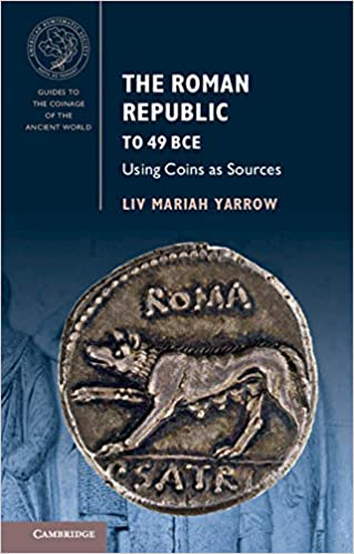
Yarrow's book is the latest in a series intended to provide non-specialists with an introduction to the use of coinage as historical evidence. Yarrow is largely successful in achieving this and has produced a work which will be useful for teachers and students alike. The work is organised thematically into four main chapters, although a useful chronological table acts as a ‘temporal index’ allowing coins relating to specific events to be easily located.
Chapter 1 (‘Money’) discusses the development and use of coinage as a facilitator of exchange in the Roman world, providing the reader with an introduction into many of the features and problems of Roman coinage. As an introduction it occasionally tends towards oversimplification of complex or controversial topics without adequate discussion or referencing, (‘The Romans continued to use credit systems’ (p.5) and give the ‘impression that [they] cared far more about the quality of the coinage that they used to settle obligations with Roman creditors than they did with those creditors whom they paid in drachms’ (p.37)). Nevertheless, there is generally a healthy openness with regards to what is not yet fully understood about Roman coinage. What we do know is presented clearly, covering all the major aspects of coinage likely to be unfamiliar to a non-specialist, such as control marks and fineness. Explanations are supported by a large number of well-chosen examples illustrated with excellent, clear photographs – a feature of the work as a whole – as well as a useful infographic covering the whole coin-production process.
Chapter 2 (‘Monuments’) looks at coins as ‘monuments in miniature’, acting for the viewer as reminders of the glorious Roman past as well as conveying contemporary political messages. Examples are again well-chosen to clearly illustrate the common features of late Republican coinage and the reasons for their presence. The numismatic evidence from the 50s BCE is effectively examined to demonstrate both Pompey's growing influence and contemporary unease about it. In the remainder of the chapter Yarrow discusses religious imagery and the depiction of foundation narratives on Roman coinage, with discussion of images of Aeneas on the city's coinage offering a useful complement to study of the Aeneid.
Chapter 3 (‘Mutinies?’) is the book's strongest. Yarrow first analyses the minting of coins by Italian and Sicilian communities in revolt against Rome and the Romans’ own numismatic responses to these revolts. The chapter then turns to internal threats against the Republic, focusing on Marius, Sulla and Pompey. This chapter, alongside the previous chapter's discussion of Pompey, will be of particular interest to teachers of A Level Ancient History for its relevance to the ‘Breakdown of the Late Republic’ module, most notably for its excellent discussion of the two Sullan issues prescribed as sources.
Chapter 4 (‘Mobilization’) explores the role of coinage in the movement of people, both physically and metaphorically. Yarrow explores the ways in which Republican coinage reflects a rhetoric of concord, anxieties over the availability of food and land, and debates over the evolution of the Roman constitution, focusing on the depiction of the secret ballot and the concept of libertas, particularly as a response to Sulla.
The book concludes with an excellent section (‘Learning More’) detailing how those who so wish are able to delve deeper into the study of Roman coinage. The reader is directed towards the easily-accessible and continually-expanding online resources which have helped to make numismatics such an exciting and vibrant discipline over recent years.
The period to which Yarrow's book is confined limits its direct applicability to most topics studied in the classroom. Nevertheless, by providing a clear introduction to Roman coinage and its use as evidence for the Roman world it will be of use to teachers and – although the book is primarily written with undergraduates (and beyond) in mind – to A Level students who wish to explore a particular interest in coinage or the period in question.


